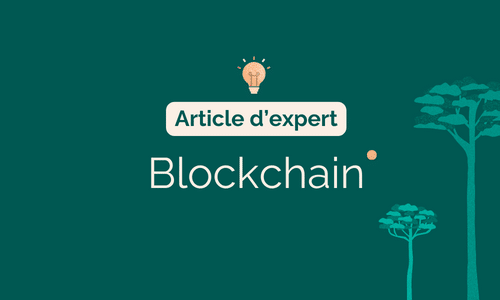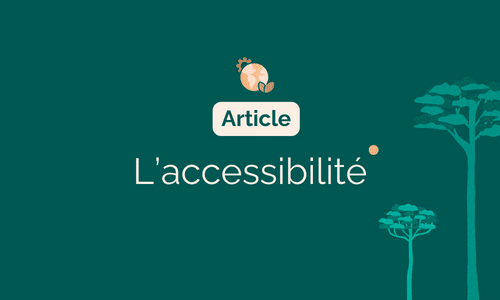The financial market panic around cryptocurrencies since the end of 2020, has reached record highs. Since peaking in December 2017, cryptocurrencies have exceeded forecasts! For example, Bitcoin has exceeded the 40,000 US dollars per unit mark for the past three months.
At the root of the success of these cryptocurrencies is the Blockchain.
What is Blockchain?
Blockchain is a cryptographic technology for archiving and executing contracts. More concretely, it is a shared, confidential, secure and transparent database designed to authenticate transactions quickly and securely.
Several types of cryptography and encryption levels can be used to make it extremely difficult to modify transaction history and identify the account holder.
It allows blockchain participants to share workflows (financial transactions in the case of cryptocurrencies); tracking changes on a shared ledger.
Implementing a secure data-sharing solution can be a tricky business. Indeed, the security of the exchange is conditioned by the trust attributed to the data coming from the stakeholders.
In most cases, companies use a central database or other means to ensure data synchronization. Data is stored in a single location identified as a "trusted source". The company managing the database must be recognized as reliable.
What does blockchain mean? blockchain?
Blockchain makes it possible to implement a "business process" where the company needs to trust data and participants without using a central database , but trusting the integrity and reliability of the workflow.
Blockchain technology translates into a decentralized digital ledger that records workflows or transactions for a cryptocurrency across multiple physical media regardless of location in the world.
These are stored in such a way as to prevent subsequent modification.
The advantages of using blockchain
Blockchain technology increases security and speeds up the exchange of information in a cost-effective and more transparent way. It also dispenses with third parties whose main role was to provide an element of trust and certification in workflows (the nodes).
Nodes can be any type of device (mainly computers, laptops or even larger servers).
Nodes form the infrastructure of a blockchain. All nodes are connected to each other and constantly exchange the latest blockchain data to keep all nodes up to date. They store, distribute and preserve the data. Theoretically, the blockchain relies primarily on nodes.
The great importance of blockchain technology has attracted the attention of organizations in various sectors; the banking sector being the most active.
This technology has enabled the development of thousands of new jobs and startups, from mobile payment solutions to healthcare applications and even electoral voting.
Blockchain on the financial markets
Blockchain technology can simplify and streamline the entire business process. What's more, it can provide an automated lifecycle where all parties involved in the transaction have access to the same exact data about a transaction.
In this scenario, blockchain technology would significantly reduce infrastructure costs, enable efficient data management, add more transparency, reduce processing cycles, enable minimal reconciliation and even cut out some intermediaries such as brokers.
Since 2015, NASDAQ has created several solutions for the financial markets, including most recently an electronic voting solution for shareholders of listed companies ref. evoting technology
Blockchain for international payments
Blockchain can therefore improve cross-border payments by speeding up and simplifying the process, while significantly reducing costs and cutting out many traditional intermediaries.
At the same time, it would make remittances more affordable and faster. Until now, the cost of sending money has been between 5% and 20% of the transaction amount. Blockchain technology could reduce costs to 2-3% of the total amount and provide guaranteed, real-time transactions across borders.
Since 2017, 12 European banks and IBM have partnered on a project to simplify domestic and international trade. Previously named Digital Trade Chain, this project led to the creation in February 2018 of the joint venture We.trade.
Blockchain to enhance digital identity
When logging into a blockchain-enabled infrastructure, users can choose how they identify themselves and with whom their identity is shared. Users are still required to register their identity on a blockchain, but once they have done so, they don't need to re-register for each service provider, provided these providers are also connected to the blockchain.
This application of blockchain technology can be used, for example, for know-your-customer needs where a single digital source of identifying information could enable more transparent account opening, reduced resources and costs, while preserving data confidentiality.
The most interesting standard to date is the ERC-725 Ethereum Identity Standard.
How to get started in Blockchain development
Several options are available, depending on the technologies and languages you master:
- For Microsoft and various programming languages including C# you can base yourself on the tutorial on Blockchain and Azure development.
- For JavaScript, based on Node.JS, an interesting framework for getting started with the Lisk SDK blockchain.
- Multiple languages are available for Ethereum, including C++, Python, Ruby, Go, and Java.
- C++ isEOS's main programming language. Preferred for its flexibility in running extended applications on top of the blockchain.
EOS also supports all WebAssembly compiled languages (WASM).







